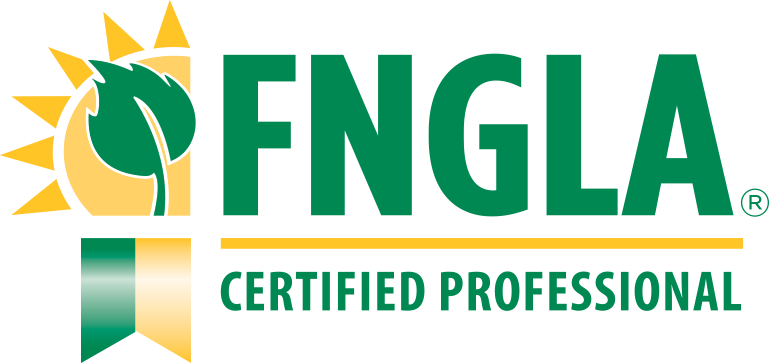
by Sheila Dunning | Dec 3, 2021
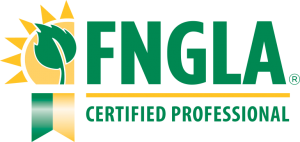 No previous experience or accreditation it required to be a landscaper in the state of Florida. So when homeowners are searching for service providers, it is important that they question potential companies about their skills. One good measure is completion of voluntary certifications such as the Florida Nursery, Growers and Landscape Association (FNGLA) Certified Horticulture Professional (FCHP). The FCHP program has been the industry’s standard for measuring horticulture and landscape knowledge since 1984. The training is also useful for property managers, homeowner associations, retail garden center employees, or anyone that wants to know more about Florida’s plants and their care.
No previous experience or accreditation it required to be a landscaper in the state of Florida. So when homeowners are searching for service providers, it is important that they question potential companies about their skills. One good measure is completion of voluntary certifications such as the Florida Nursery, Growers and Landscape Association (FNGLA) Certified Horticulture Professional (FCHP). The FCHP program has been the industry’s standard for measuring horticulture and landscape knowledge since 1984. The training is also useful for property managers, homeowner associations, retail garden center employees, or anyone that wants to know more about Florida’s plants and their care.
Plants are complex and variable living things that range from microscopic to the largest of living organisms. With steady population growth in the state of Florida, environmental damage risks created by the use of improper products and practices has continually risen. State and federal natural resource protection agencies have restricted certain horticultural practices including fertilizer and pesticide application. It takes scientific knowledge to properly maintain lawns and landscapes, not just a “green thumb” in order to keep plants healthy while reducing contamination to the soil, air and water that we all need.
The Florida Certified Horticulture Professional training covers 16 areas, including identification, fertilization, irrigation, pest management, safety and business practices. Lecture and hands-on activities are utilized at each session. The 60-hour course will enhance anyone’s knowledge and will provide the basis for professionals to deliver a skilled service to clientele. The course is available in-person or virtually via Zoom.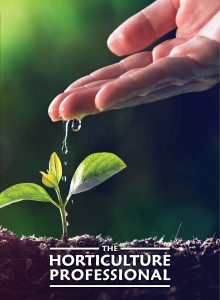
If you are a green industry worker or a concerned citizen interested in attending a FCHP preparatory course, there is an opportunity coming up in Crestview. Beginning Thursday, January 6, 2022 and continuing for 8 weeks to February 24, 2022, the Okaloosa County Extension office will be providing training for $185, which included the newest hard copy manual and plant identification book. Contact Sheila Dunning, 850-689-5850, sdunning@ufl.edu for more information.
For more details and to register go to: https://www.eventbrite.com/e/florida-certified-horticulture-professional-fchp-training-tickets-215748017127

by Julie McConnell | Apr 2, 2020
Following the issuance of the Governor’s Executive Order 20-91 we have had a lot of questions from the Green Industry concerned about their status as essential employees. As noted in the excerpt below from the State of Florida Office of the Governor Executive Order Number 20-91 (Essential Services and Activities During COVID-19 Emergency) landscapers are included under the Public Works and Infrastructure Support Services Category.
PUBLIC WORKS AND INFRASTRUCTURE SUPPORT SERVICES
-
Workers who support the operation, inspection, and maintenance of essential public works facilities and operations, including bridges, water and sewer main breaks, fleet maintenance personnel, construction of critical or strategic infrastructure, traffic signal maintenance, emergency location services for buried utilities, maintenance of digital systems infrastructure supporting public works operations, and other emergent issues.
-
Workers such as plumbers, electricians, exterminators, builders, contractors, HVAC Technicians, landscapers, and other service providers who provide services that are necessary to maintaining the safety, sanitation, and essential operation of residences, businesses and buildings such as hospitals, senior living facilities, any temporary construction required to support COVID-19 response.
-
Workers who support, such as road and line clearing, to ensure the availability of and access to needed facilities, transportation, energy and communications.
-
Support to ensure the effective removal, storage, and disposal of residential and commercial solid waste and hazardous waste, including landfill operations.
-
Workers who support the operation, inspection, and maintenance of essential dams, locks and levees.
-
Workers who support the inspection and maintenance of aids to navigation, and other government provided services that ensure continued maritime commerce.
Florida Department of Agriculture and Consumer Services (FDACS) recommends that all essential employees carry a letter from their employer that describes their role as an essential employee.The Governor’s Office has provided a template that can be found at the following link. Download and modify to fit your business role. http://blogs.ifas.ufl.edu/nfrecsv/files/2020/03/2020-04-01-Essential-Worker-Movement-Letter-DRAFT-2.0-2.pdf
Please be mindful that although the landscape industry can continue working, it is imperative that all citizens follow CDC recommendations to prevent the spread of COVID-19. These can be found here https://www.cdc.gov/coronavirus/2019-ncov/prevent-getting-sick/prevention.html
In addition to this resource, consider incorporating recommendations from The Urban Ag Council of Georgia where appropriate.
*Stagger start times so that each manager will only work with their team. No more than 5-person crew.
* Employees are required to keep 8-foot separation between colleagues and/or any other people. Focus on social and work distancing.
*No more than 2 people per single cab truck and 4 people per crew cab truck (exceptions are made for employees who need to use personal vehicles to accomplish this).
*Wear dust masks when in vehicle and outside.
*Trucks are to be thoroughly cleaned at the end of every day.
*Crew leaders must clock in their crew. Do not pass phone around for them to clock-in.
*Daily – every employee (office and field) is screened with questions before starting work.
- Do you currently have a fever? Or have you had a fever in the last week?
- Do you have a cough?
- Do you have shortness of breath?
- Do you have vomiting/nausea?
- Do you have diarrhea or stomach issues?
- Have you been in contact with anyone with a confirmed or suspected case of the COVID-19?
Any employee that answers yes to any question will be asked to return home and HR will be notified to receive additional instructions.
Please be safe and let us know if we can assist in any way.
Your UF/IFAS Panhandle Commercial Horticulture Team
Bay – Julie McConnell juliebmcconnell@ufl.edu
Escambia – Beth Bolles bbolles@ufl.edu
Okaloosa – Sheila Dunning sdunning@ufl.edu
Santa Rosa – Matt Lollar mlollar@ufl.edu
Walton – Evan Anderson eanderson350@ufl.edu
Washington – Matt Orwat mjorwat@ufl.edu
Calhoun – Daniel Leonard d.leonard@ufl.edu
Leon – Mark Tancig tancig00@ufl.edu
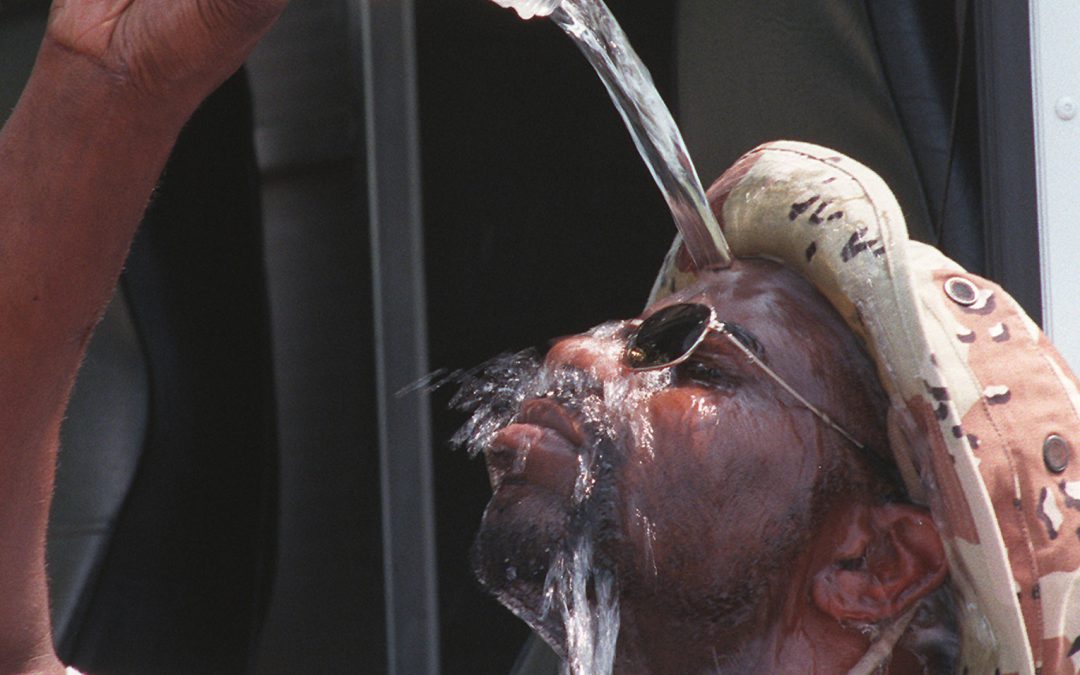
by Julie McConnell | Aug 9, 2019
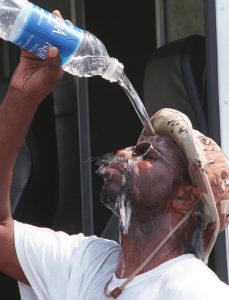
Kenny Stokes, a courier for the University of Florida’s Institute of Food and Agricultural Sciences, battles summer heat the old fashioned way. Stokes, whose van has no air conditioning, cooled off after his mid-morning deliveries. With temperatures hovering around the century mark and a heat index of 108, he decided to take matters into his own hands.
Triple digit heat indexes make it more than unpleasant to work outside, it can be life threatening. Understanding how to prevent and recognize heat injury is critical for people who work outdoors in Florida.
For horticulture and agriculture professionals who also apply pesticides, recognizing heat injury can be further complicated by the similarities of symptoms to pesticide exposure.
To learn more about preventing workplace heat related illness, read the article below by UF/IFAS Extension Hillsborough County Commercial Horticulture Agent Susan Haddock.
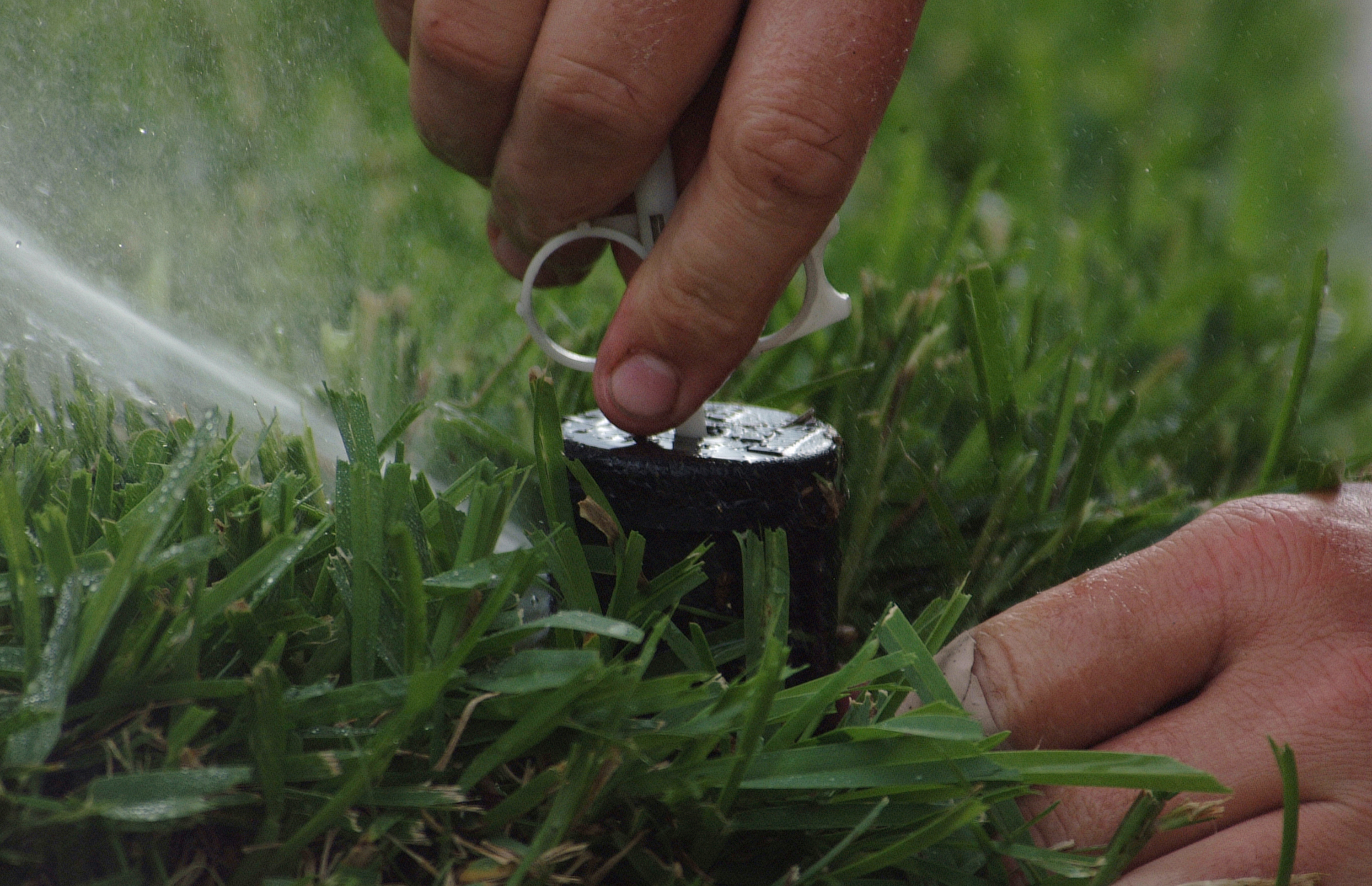
by Sheila Dunning | Apr 5, 2018
 This month, recognized by the Senate and Florida’s governor, reminds diggers why calling 811 before all outdoor digging projects is important to your safety. Before installing a mailbox, fence, deck, garden or tree make sure to call Sunshine 811 to have underground lines marked. 811 is the free national number designated by the Federal Communications Commission. It notifies utility companies, who in turn send their professional locators to identify and mark the appropriate location of underground line with paint and flags in colors that identify the utility type. The following colors represent the seven various utilities: red, orange, blue, green, yellow, purple and white. To see which colors correspond with each utility click on the picture below:
This month, recognized by the Senate and Florida’s governor, reminds diggers why calling 811 before all outdoor digging projects is important to your safety. Before installing a mailbox, fence, deck, garden or tree make sure to call Sunshine 811 to have underground lines marked. 811 is the free national number designated by the Federal Communications Commission. It notifies utility companies, who in turn send their professional locators to identify and mark the appropriate location of underground line with paint and flags in colors that identify the utility type. The following colors represent the seven various utilities: red, orange, blue, green, yellow, purple and white. To see which colors correspond with each utility click on the picture below:
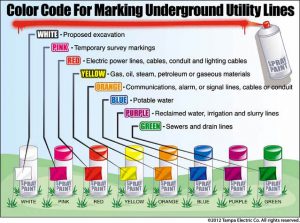
Hitting an underground utility line while digging can cause injuries, utility service outages to an entire neighborhood and damage to the environment. Failure to call before digging results in one unintentional utility hit every eight minutes nationwide. You could also be financially affected with costly fines and high repair costs.
Calling 811 in Florida is the law. At least two full business days before digging, do-it yourselfers and professional excavators must contact 811 by phone to start the process of getting underground utility lines marked. This is a free service. Be sure that all utilities have been marked before grabbing the shovel. Follow up on your one call ticket by contacting 811 again on the third day. For more information on Florida’s law, visit www.Sunshine811.com.
by Beth Bolles | Apr 22, 2016
Muhly grass (Muhlenbergia capillaris) is a generally pest free plant in our area, however, we are seeing the native mealybug, Stemmatomerinx acircula, on plants in various landscapes. Insects are on the leaves and are grey with white wax that may have some filaments. You may also see long ovisacs on the leaves which contain eggs and crawlers. The native fakahatchee grass may also be a host.
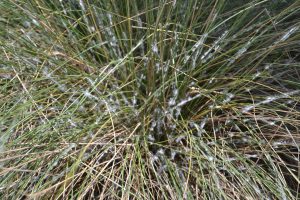
Muhly grass infested with mealybug. Photo: Beth Bolles
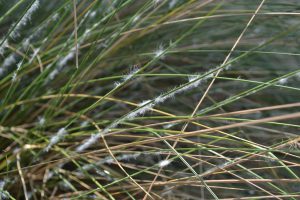
The mealybug is white with fine filaments and numerous mealybugs can be found each leaf. Photo: Beth Bolles
The common practice of right plant, right place does not always prevent the mealybug infestations on muhly grass. Specimens in both full and shade can be affected, as well as mass plantings and those spaced out. At this time, there is not a lot of information on why some plantings are heavily infested and others are not.
Since mealybugs are piercing sucking insects, there may be some browning of leaves, especially on less vigorous plants. You may have to remove and destroy plants that are heavily infested and declining. In situations where treatment is warranted you may choose a systemic insecticide or oil spray to keep plants looking more attractive. As the landscape manager, you will need to decide what is an acceptable threshold for this pest.

 No previous experience or accreditation it required to be a landscaper in the state of Florida. So when homeowners are searching for service providers, it is important that they question potential companies about their skills. One good measure is completion of voluntary certifications such as the Florida Nursery, Growers and Landscape Association (FNGLA) Certified Horticulture Professional (FCHP). The FCHP program has been the industry’s standard for measuring horticulture and landscape knowledge since 1984. The training is also useful for property managers, homeowner associations, retail garden center employees, or anyone that wants to know more about Florida’s plants and their care.
No previous experience or accreditation it required to be a landscaper in the state of Florida. So when homeowners are searching for service providers, it is important that they question potential companies about their skills. One good measure is completion of voluntary certifications such as the Florida Nursery, Growers and Landscape Association (FNGLA) Certified Horticulture Professional (FCHP). The FCHP program has been the industry’s standard for measuring horticulture and landscape knowledge since 1984. The training is also useful for property managers, homeowner associations, retail garden center employees, or anyone that wants to know more about Florida’s plants and their care.







